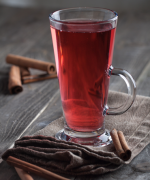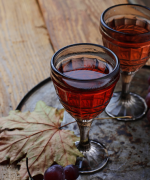Whether for festivity or fortification, mulled wine has been around for at least 2000 years.
When the temperature drops, you might like to stave off the chill with a big steaming pot of mulled wine and fill your home with the comforting aroma of red wine, citrus and spice. The mention of mulled wine conjures images of winter-wonderland white-Christmas scenes – no matter where in the world you live.
Although mulled wine is a staple of contemporary Christmas celebrations throughout Europe, and the customs and recipes may differ somewhat, the celebratory nature of the warm, spiced (usually) red wine is common to all.
The Original Tipple
Its long history incorporates both pagan and Christian lore, traverses old and new worlds and established it as a favourite Christmastime beverage, travellers’ tipple of choice and a tonic of sorts in times of convalescence.
Greek Beginnings
The ancient Greek version of mulled wine, Ypocras or Hippocras, takes its name from Hippocrates, the Greek physician regarded as the father of medicine.
Wine played an important role in medicine in Greek antiquity. In the only ancient cookery book surviving to our times, De re coquinaria, there are a few versions of spice wine (conditum paradoxum) as well as wine with honey and pepper.
Winter Solstice
Spice wine became a prominent feature of the Saturnalia Festival in ancient Rome – the winter solstice celebration of the passing of the shortest day of the year and the rebirth of the sun.
By the time of the late-Roman Republic, Saturnalia had grown from a one-day celebration to a week-long festival held each year. Consuming warm wine as part of the celebrations was thought to help ward off winter illness and it became firmly associated with the winter celebrations.
This pagan solstice celebration became part of the celebration of Christmas Day. By the middle ages, mulled wine had become entrenched as part of the festivities throughout Europe.
Mulled Wine As We Know It
According to several medieval cookbooks the most common of the sweet, spiced wines in the late middle-ages were still referred to as hippocras, with the term mulled wine coming later.
Just as they do today, ingredients varied depending on the region, but key components were hot red wine blended with sugar and ground spices – usually ginger, cinnamon and pepper and sometimes nutmeg and cloves. Mid-winter Christmas, anyone?

Berry Mulled Cider

Winter Mulled Rosé


